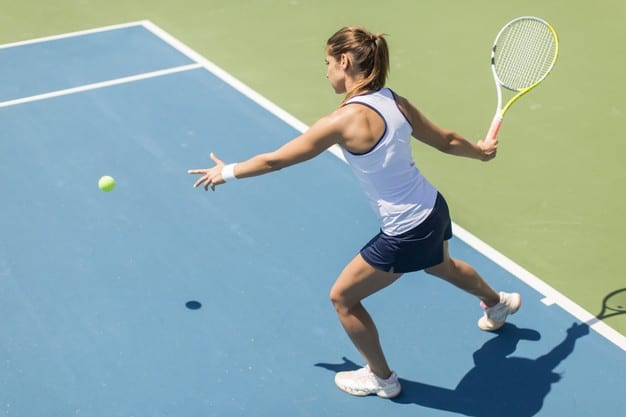Whether you play tennis, golf, or baseball – rotational movements are integral movements of the sport. Swinging a racket, a golf club, or throwing a fastball produces a lot of torque and, over time, can predispose athletes to repetitive strain and injuries. Commonly reported injuries in these athletes are low back pain, rotator cuff syndrome, elbow pain, and knee pain. These sports are asymmetrical by nature, favoring certain muscles over others. For example, right handed golf and baseball players always rotate and wind up their trunk to the right while explosively unwinding to the left to generate force into their drives and pitches, respectively. These rotational forces are not only asymmetrical, they are also incredibly high, producing ball speeds that are faster than the speed limit on highways. The average fastball speed in Major League Baseball is about 90 mph. The Professional Golfers Association TOUR average drive speed is about 113 mph and they hit 290 yards per drive.
So what can you do to minimize muscle imbalances, risks for injuries overtime and optimize your sports performance?
In addition to playing the sport you love, you should consider performing an individualized stabilization and motor control program based on your needs and goals. At CHARM, the team of physical therapists can evaluate you for asymmetries and kinetic chain weak links using the standardized Redcord NEURAC protocol, as well as the movement screen. A weak link is a deficiency in a biomechanical chain which leads to dysfunction in the musculoskeletal system. These deficits could be related to neural, muscular, or osteoligamentous subsystems, or often – interaction between these subsystems. During the kinetic chain weak link testing, we test your ability to get into and maintain certain position using proper muscle recruitment. We also seek to identify your movement compensatory patterns in order to find out how you can improve your current weak links. We select exercises based on your test results – all exercises are performed pain-free and they are three dimensional, just like human movement. The goal is to bring your body back to left/right symmetry and give your body an opportunity to learn proper motor control patterns to decrease the unnecessary strain to your osteoligamentous structures overtime, which will enhance your sports performance.
In a research study performed by Seiler et al. on 20 competitive juniors golfers, the Redcord training group who used 6 specific exercises increased their clubhead velocity speeds by 3.7% in comparison to the increase in 1.2 % control group who performed traditional strength exercises (bench presses, biceps curls, squats, sit ups, back extensions, seated rotations with medicine ball). The difference was statistically significant, indicating that training with Redcord can increase rotational power during a golf swing better than traditional strength training. In my opinion, the limitations of the study included pre-picked Redcord sling exercises without prior testing. I believe that everyone is a unique individual, which is what makes an individualized program a key to success. I’d expect greater gains from a personalized plan.
I have played tennis for over 17 years now and I absolutely believe that stabilization program geared towards balance and symmetry addressing the weak links is integral part of training outside of the tennis court. Let us help you get to YOUR “top.” Be proactive, don’t wait until you are hurt and have to sit out the sport you love. Come see the physical therapists at CHARM for an individualized weak link testing and a professional, personalized exercise program.





